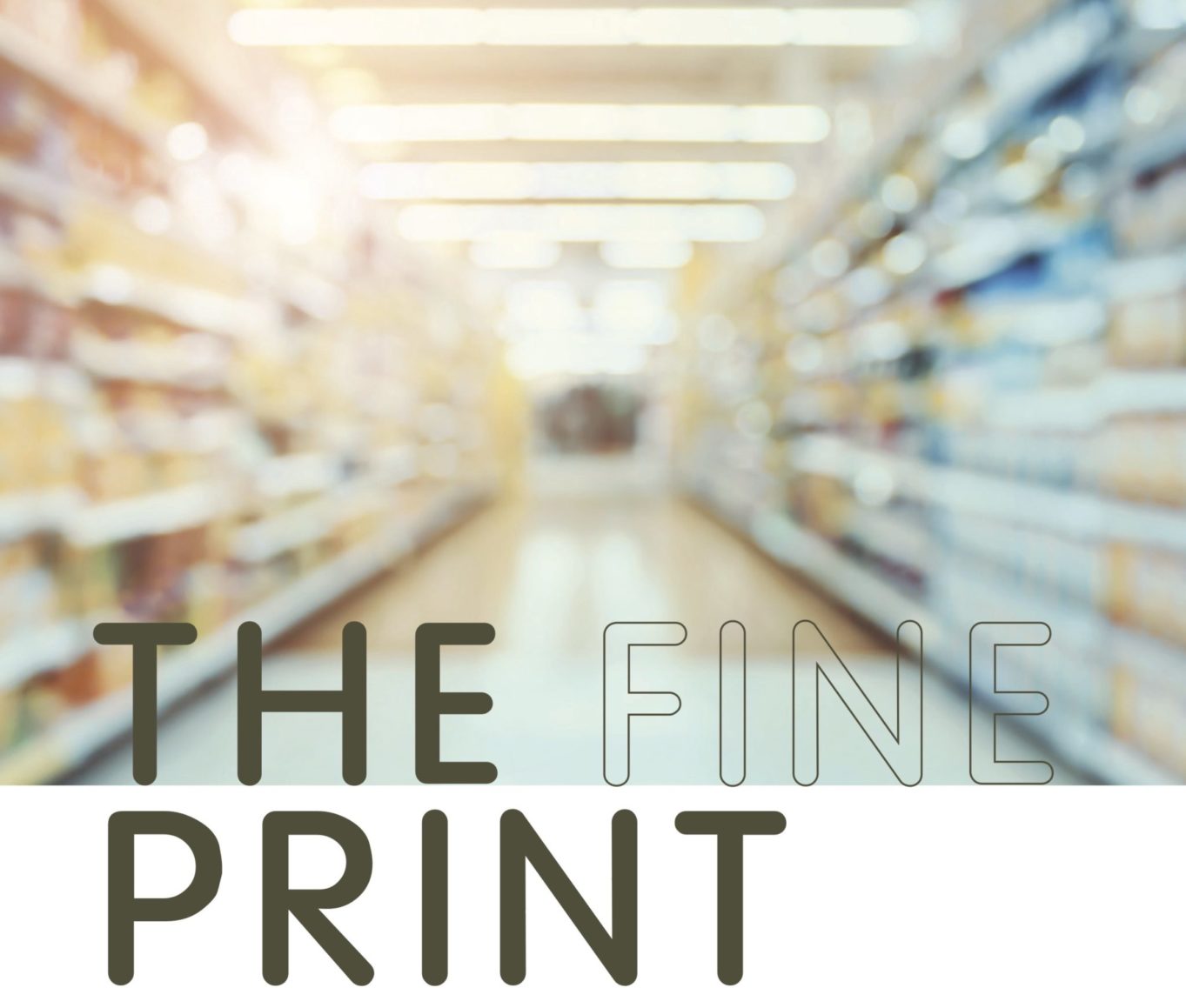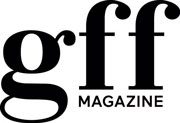The Fine Print: How to Read Food Labels to Safely Eat Gluten-Free

Food labels solve almost all the mysteries around identifying gluten-free products—if you know how to decode them. Los Angeles-based registered dietitian Janelle Smith helps navigate the label-reading labyrinth, so you can confidently shop gluten free.
HOW CAN YOU TELL IF A FOOD OR OTHER PRODUCT IS GLUTEN FREE?
Are GF labels trustworthy? What about foods that seem GF but don’t declare it? What ingredients have gluten hidden in them? Some labels make it easy to spot gluten, while others make you wish you’d memorized the long list of chemical-sounding ingredients you found that one time on that webpage. Read on to learn how to decipher those mysterious ingredients and to make safe choices when you shop.
Look for Gluten-Free Words and Symbols
Whether written out or as symbols, “gluten free” designations are a fast, convenient way to narrow your food options toward safe bets.
Products labeled “gluten free,” “free of gluten,” or “no gluten” must adhere to the August 2014 ruling established by the US Food and Drug Administration (FDA) that the food in the package must contain less than 20 parts per million (ppm) gluten.
Some GF symbols are trademarked by independent organizations, which confirm that the products contain less than 20 ppm gluten (in many cases, 10 ppm is the upper limit) and oversee labeling of such gluten-free products.
Look for Wheat on the Label
Believe it or not, according to the FDA, labeling gluten in food is voluntary, not required. However, the FDA considers wheat (not barley, rye, or malt, which also contain gluten) a major allergen, so wheat must be clearly stated on all food labels. That means if a product is not labeled gluten free, and its label states “contains wheat” at the bottom or “wheat” anywhere in the ingredients list, it’s unsafe to eat. Other ingredients containing wheat, such as bulgur, semolina, and durum, must still be declared as wheat, either in the allergen statement or in the ingredients list. (Still, memorizing the names of these wheat-containing ingredients may come in handy for eating at restaurants, where allergen labels are not required.)
Don’t Forget to Look for the Other Major Gluten- Containing Ingredients
Since barley, malt, and rye are not designated and regulated as major allergens by the FDA, you need to carefully screen food labels for these gluten-containing ingredients—unless the item is labeled gluten free. Do the same with oats, which can be subject to cross contamination.
Check Allergen Statements
As previously mentioned, the FDA considers wheat a major allergen, so any food-packaging allergen statements will note whether the product contains wheat (but again, not barley, malt, rye, or oats). However, some food products are not regulated by the FDA; such products are not required to include an allergen statement or label. See below to know where you must be extra vigilant.
Allergen Label Not Required:
- Packaged food made in the US
- Packaged food imported into the US
- Supplements: vitamins, protein powder
- Eggs in-shell, dairy
- Alcohol: malted products
Allergen Label Required:
- Medications: over-the-counter or prescription items (check a source such as glutenfreedrugs.com or call the company)
- Raw produce
- Raw meat, seafood, poultry
- Liquid or powdered eggs
- Alcohol (other than malted products): liquor, wine, beer
- Food service establishments
DID YOU KNOW?
A 2015 survey published in the scientific journal Food Chemistry suggests there’s no significant difference between the GF accuracy of foods bearing a gluten-free symbol, and those that simply state on their packaging that they are gluten free.
Skip Products That Contain Any of These Ingredients The following ingredients contain gluten and are therefore deal breakers.
- barley
- brewer’s yeast
- malt
- malt extract
- malt flavor
- malt vinegar
- oats (likely if the product is not labeled GF)
- rye
- wheat
Check the Source Before Trusting Products with These Ingredients
Do more investigating for the following ingredients in products not labeled gluten free:
- Natural flavors (tiny chance they contain barley)
- Natural smoke flavor (tiny chance it contains barley)
- Dextrin, dextrose, and food starch: In FDA-regulated foods, these ingredients are safe if their label does not state that they contain wheat or does state that the product is gluten free. In medications, and foods regulated by the US Department of Agriculture (USDA), however, these ingredients could contain residual gluten if made from wheat. (USDA-regulated products do not need to comply with allergen labeling.)
Consider “May Contain” Statements
The intrinsically vague and voluntary “may contain” statement has no legal definition, but it can be used as a way for a company to sidestep responsibility for potential cross contamination.
Companies are not required to let consumers know if their products are made on shared equipment or in shared facilities, and if their product doesn’t feature a GF designation, they’re under no obligation to test their products to ensure they’re gluten free.
But recent research studies, including a 2018 study featured in the European Journal of Clinical Nutrition, suggest that “may contain” statements are not a reliable way to assess the risk for cross contact with gluten in manufacturing. In other words, it’s a “buyer beware” situation.
When Unsure, Assess the Risk
Even if you don’t recognize all the ingredients on a food label, asking yourself the following questions will help you decide whether you can safely eat that food:
- How likely is it that the food contains gluten? The more you consider this question when you shop, the more familiar you will become with identifying questionable items. Breaded foods that aren’t designated GF are obviously off limits. Salad dressings and other marinades are questionable, as are spice mixes.
- How likely is it that the food has come in contact with gluten? A ready-made deli sandwich labeled gluten free may not be safe if it was prepared in the same part of the deli as the sandwich es on wheat or rye bread.
- How much of a risk am I willing to take? Only you can decide if you are willing to take a chance with a specific food—and whether the reward is worth the risk.
Use Common Sense
Some naturally gluten-free foods are labeled GF, while others are not. Brands know that gluten-free food has market appeal right now; if slapping a “GF” symbol on water or yogurt sells more units, companies are more than happy to do it. Here’s where common sense comes into play. You can bet the unpeeled orange that’s not labeled GF is uncontaminated, whereas the unlabeled granola bar, not so much.
Surprising Foods That May Contain Gluten:
- barbecue sauce
- bouillon
- canned and dried soups
- cold and hot cereals
- Communion wafers
- enchilada sauce
- frozen french fries
- gravy
- herbal tea
- marinades
- miso
- protein bars
- salad dressings
- seasoned rice mix
- self-basting poultry
- tortilla chips (multigrain, but often not labeled as such)
- vegetarian meat analogues
- wasabi paste
Label-Reading Cheat Sheet
What is the likelihood that a product contains gluten if it …
- contains wheat, barley, rye, or malt: ABSOLUTE
- contains oats and is not labeled gluten free: ABSOLUTE
- is naturally gluten free and has other ingredients but no allergen statement: LOW
- is labeled gluten free: LOW
- is labeled “No gluten-containing ingredients: UNKNOWN


One Comment on “The Fine Print: How to Read Food Labels to Safely Eat Gluten-Free”
Thanks for your article. But, you left out modified food starch, which is most often made with wheat. Sometimes the label will include corn starch as the source, but not always. Keeps many soy sauces and other manufactured foods off the permissible list.